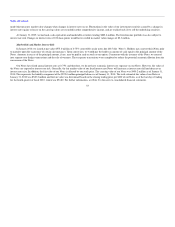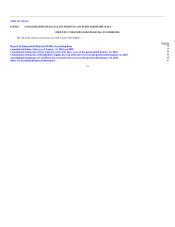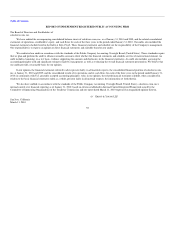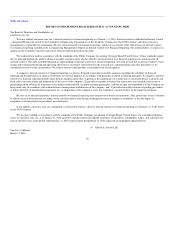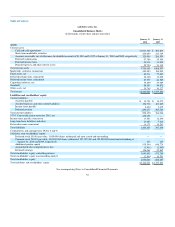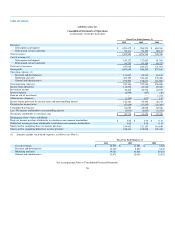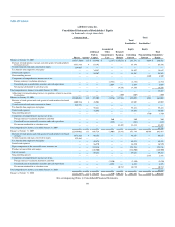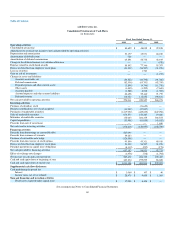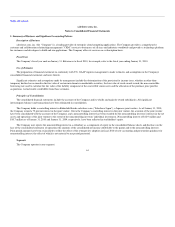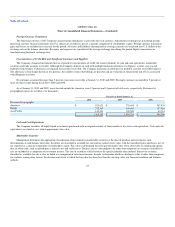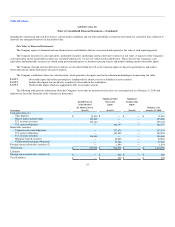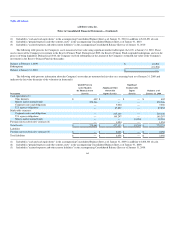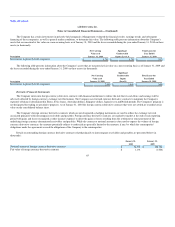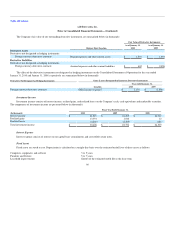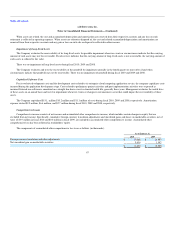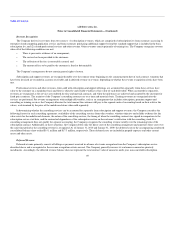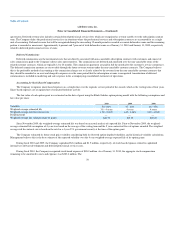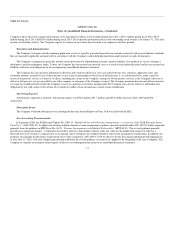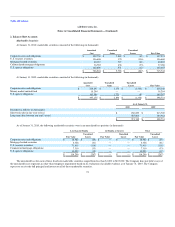Salesforce.com 2009 Annual Report Download - page 65
Download and view the complete annual report
Please find page 65 of the 2009 Salesforce.com annual report below. You can navigate through the pages in the report by either clicking on the pages listed below, or by using the keyword search tool below to find specific information within the annual report.
Table of Contents
salesforce.com, inc.
Notes to Consolidated Financial Statements—(Continued)
Foreign Currency Translation
The functional currency of the Company's major foreign subsidiaries is generally the local currency. Adjustments resulting from translating foreign
functional currency financial statements into U.S. dollars are recorded as part of a separate component of stockholders' equity. Foreign currency transaction
gains and losses are included in net income for the period. All assets and liabilities denominated in a foreign currency are translated into U.S. dollars at the
exchange rate on the balance sheet date. Revenues and expenses are translated at the average exchange rate during the period. Equity transactions are
translated using historical exchange rates.
Concentrations of Credit Risk and Significant Customers and Suppliers
The Company's financial instruments that are exposed to concentrations of credit risk consist primarily of cash and cash equivalents, marketable
securities and trade accounts receivable. Although the Company deposits its cash with multiple financial institutions, its deposits, at times, may exceed
federally insured limits. Collateral is not required for accounts receivable. The Company maintains an allowance for doubtful accounts receivable balances.
The allowance is based upon historical loss patterns, the number of days that billings are past due and an evaluation of the potential risk of loss associated
with delinquent accounts.
No customer accounted for more than 5 percent of accounts receivable at January 31, 2010 and 2009. No single customer accounted for 5 percent or
more of total revenue during fiscal 2010, 2009 and 2008.
As of January 31, 2010 and 2009, assets located outside the Americas were 12 percent and 14 percent of total assets, respectively. Revenues by
geographical region are as follows (in thousands):
Fiscal Year Ended January 31,
2010 2009 2008
Revenues by geography:
Americas $ 923,823 $ 776,495 $ 557,976
Europe 232,367 190,685 127,010
Asia Pacific 149,393 109,589 63,714
$ 1,305,583 $ 1,076,769 $ 748,700
Cash and Cash Equivalents
The Company considers all highly liquid investments purchased with an original maturity of three months or less to be cash equivalents. Cash and cash
equivalents, are stated at cost, which approximates fair value.
Marketable Securities
Management determines the appropriate classification of investments in marketable securities at the time of purchase and reevaluates such
determination at each balance sheet date. Securities are classified as available for sale and are carried at fair value, with the unrealized gains and losses, net of
tax, reported as a separate component of stockholders' equity. Fair value is determined based on quoted market rates when observable or utilizing data points
that are observable, such as quoted prices, interest rates and yield curves. Declines in fair value judged to be other-than-temporary on securities available for
sale are included as a component of investment income. The cost of securities sold is based on the specific-identification method. Interest on securities
classified as available for sale is also included as a component of investment income. In order to determine whether a decline in value is other-than-temporary,
we evaluate, among other factors: the duration and extent to which the fair value has been less than the carrying value, our financial condition and business
outlook,
62



